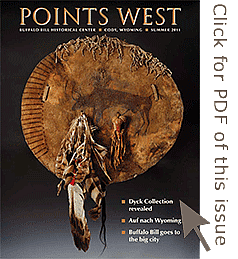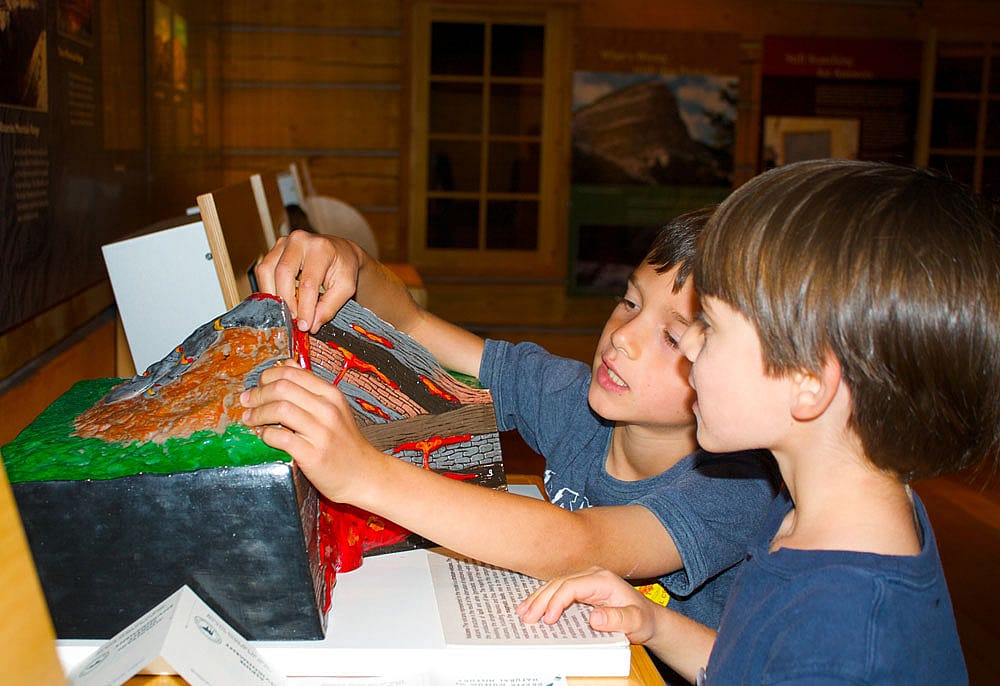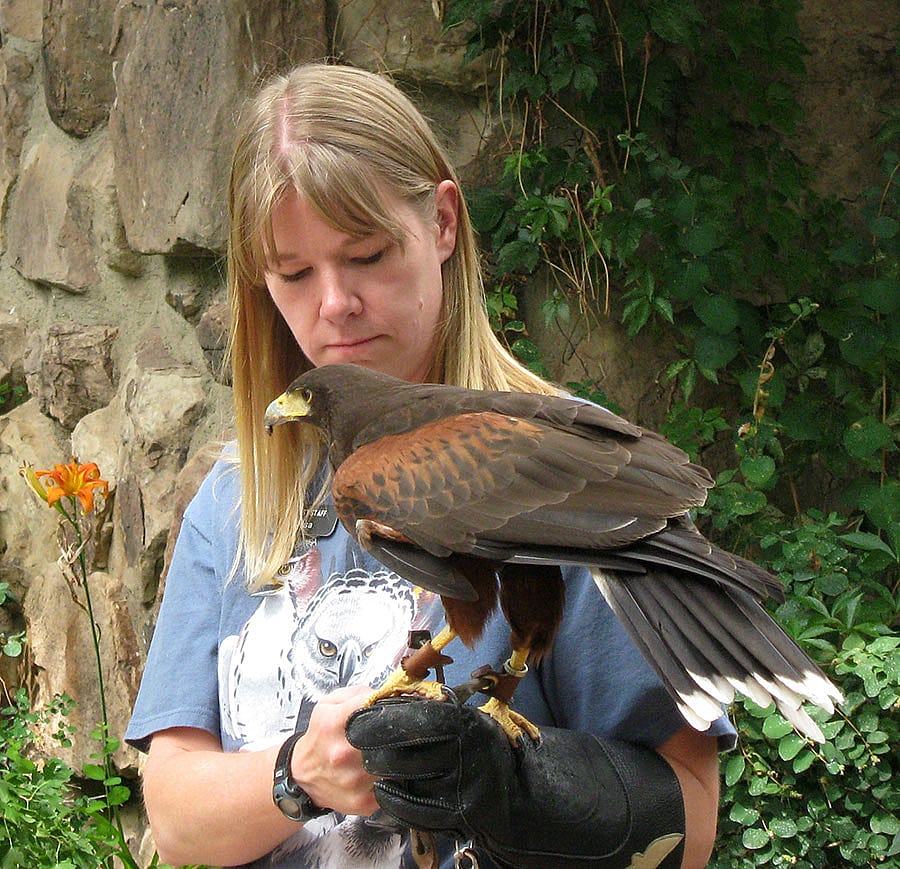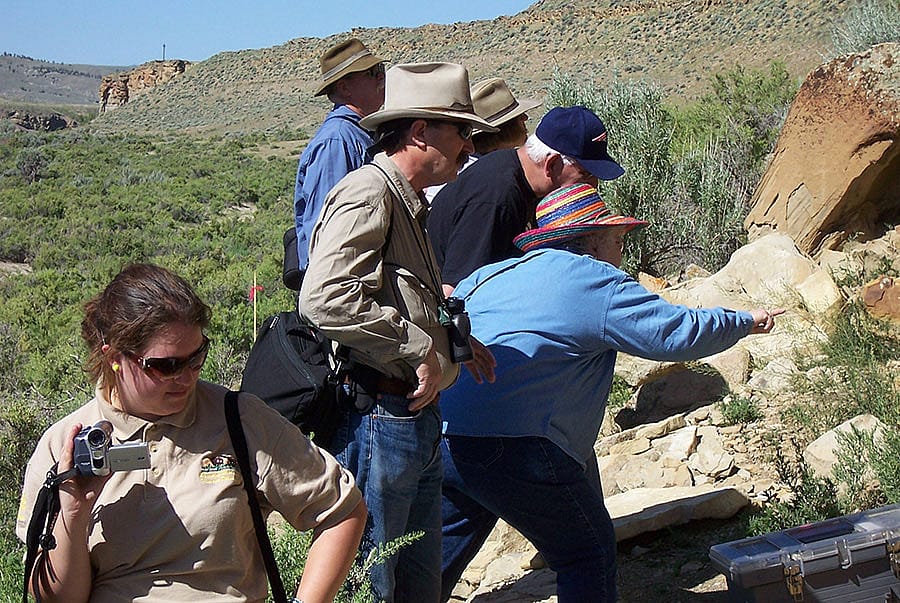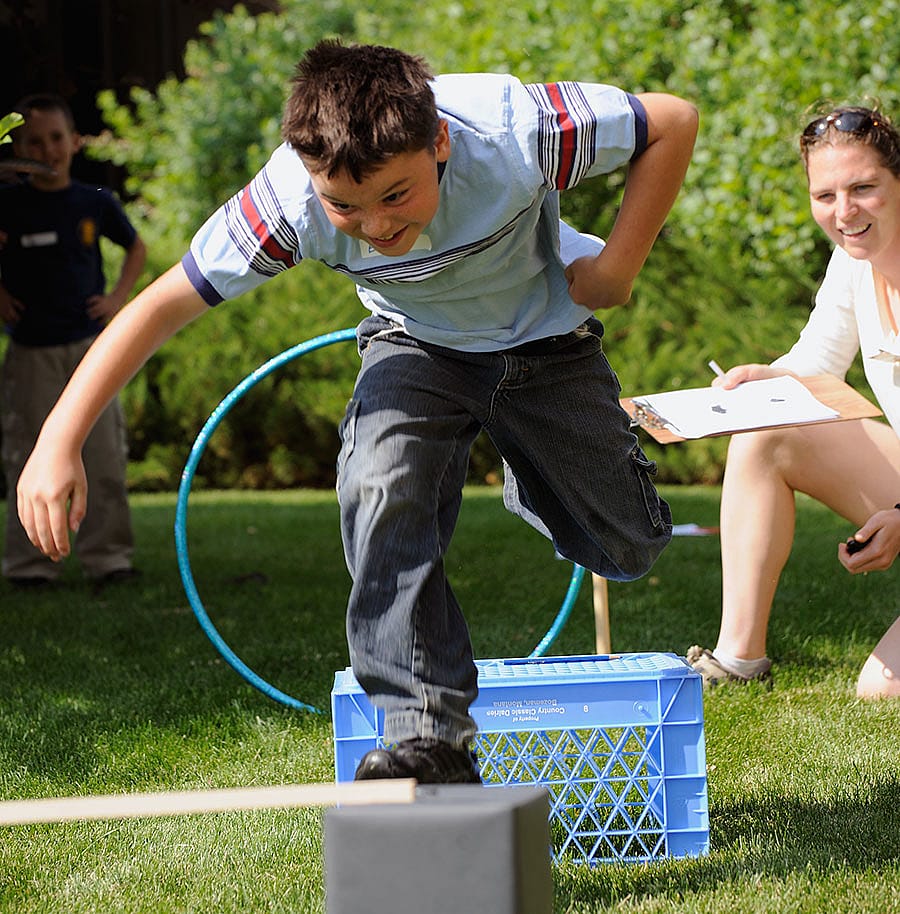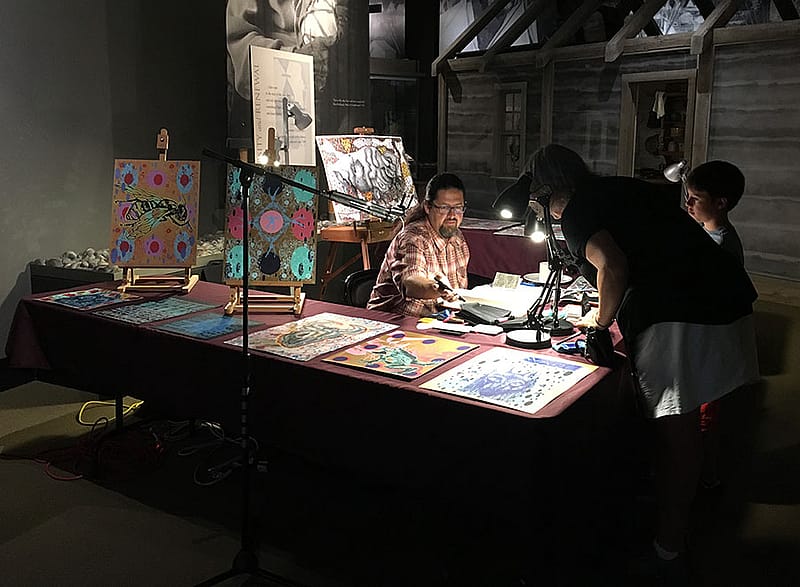
Inspiring Visitors: Three Voices on Interpretation – Points West Online
Originally published in Points West magazine
Summer 2011
Inspiring Visitors: Three Voices on Interpretation
The Buffalo Bill Center of the West is in the midst of significant changes in the way we think, act, work, and interact with our audiences. At the forefront of this movement is an examination of the experience that we provide to our visitors through our exhibits, programs, and publications. When we discuss “the experience,” inevitably, the word “interpretation” enters into the discussion.
Unfortunately, there is a lot of confusion about what interpretation is, and what interpretation means. The following essays, written by three of our interpretive educators, provide three different perspectives on what interpretation is all about.
The Nuts and Bolts of Museum Interpretation
By Emily Buckles
Interpretive Specialist and Natural Science Educator
Interpretation has been around since humans first started relating stories and skills to one another thousands of years ago; thus, there are countless interpretive styles and techniques. Nevertheless, in its most basic sense, interpretation is communication. Hopefully, it is effective communication that helps people understand the meanings, the history, and the relevance of an object or idea. Hopefully, it is communication that inspires people to think, rethink, and act. Hopefully, it is communication that is fun and enjoyable, and one that appeals to our audiences. And most importantly—hopefully, it is communication that evokes an emotion in our visitors. Whether those feelings are big or small, happy or sad, they connect people to objects, places, and one another.
As interpretive educators, these are the guidelines of interpretation for which we strive, but it is challenging to meet all of these expectations all of the time. It takes a lot of creativity, flexibility, and knowledge in order to find the pertinent and important information to convey in an effective way.
It also requires us to “think outside the box” and explore the Center from new and unique perspectives.
Sometimes when defining interpretation, it is helpful to define what interpretation is not. Interpretation as discussed here is not just translation, i.e. foreign language or sign language interpretation. While these are definitely forms of communication, museum interpretation is broader, encompassing a larger audience.
Furthermore, interpretation is not “interpretorture” where a visitor is subjected to endless facts and tedious information about an object or idea. On the other hand, interpretation is also not “interpretainment,” where we are solely looking to amuse visitors without challenging them with issues and ideas. Interpretation is a fine balance among all of these factors.
To help us find the right balance, one of the first things to examine is our audience. We have traditionally characterized our audiences by their age, ethnicity, place of residence, and educational background. While this is interesting market research, it may not be the most helpful information for designing interpretive experiences.
In an ideal world, we would want to know why someone is coming to a museum—specifically our museum. In his Identity and the Museum Visitor Experience, researcher John H. Falk suggests several possibilities. Is the visitor here for knowledge and research? Are they coming because their friends told them they should? Are they coming because this is a primary attraction in the region, and they want to see all there is to see? Is the visitor coming to seek reverie and contemplation? Or, do they just want to be good parents and hosts, and share positive experiences with others?
All of these are valid and legitimate reasons for visiting a museum. In reality, people are probably here for each of these reasons at different times in their lives. If we can design interpretive experiences that meet these needs, we will be a more successful museum in the future.
Program Interpretation with a Personal Touch
By Megan Smith
K-12 Curriculum and Digital Learning Specialist
Imagine a hot July day with a parking lot filled to capacity at the Buffalo Bill Center of the West. The arriving visitors may be families with children, grandparents parking their RVs, or international visitors experiencing the West for the first time. Many have been, or are headed to, Yellowstone National Park. Some are not sure what awaits them inside. One thing they will discover is personal experience—interpretive guides and docents trained to help make the exhibits come alive.
There is a distinct smell in the air: Is that a campfire? As the visitors investigate and follow the scent, they find a cook at a chuck wagon on the island in front of the Center. The chuck wagon cook’s friendly voice welcomes them to the Center and offers some authentic beans, biscuits, and coffee. After a long day, this is the food a cook would have served to the men working a cattle drive in the Old West. The chuck wagon, the food, and even the cook offer a glimpse of what the West was once like.
The cook answers questions and shares stories about the chuck wagon. This experience helps visitors think about what this life might have been like and compare it to their own. They might decide the food is delicious and share their own story of cooking over an open campfire, or they might decide that this life is just not for them. No one reaction is right or wrong, but in the end, the interpretive program will hopefully illicit a response—good or bad!
After spending ten minutes outside, it is time to head into the museum where more experiences are in store. On most days, visitors can rest their feet for fifteen minutes and listen to a spotlight on wolves, firearms, western art, and even learn a little more about a chuck wagon. A dinner bell rings outside the Center’s Buffalo Bill Museum—the sound that supper might be ready at the chuck wagon in this gallery.
While we don’t actually serve supper in the gallery, one of our docents shares the wonderful insights of life on the cattle drive. Audiences young and old love the stories that come alive for them. Other experiences that inspire—and even challenge—visitors are programs in the Center’s Coe Auditorium, as well as daily, afternoon kid-friendly family programs and activities in the gardens. There is something for everyone!
While most of our guests venture to Cody and the Buffalo Bill Center of the West during the summer months, there are important audiences that arrive during the off-season. This past fall almost two thousand schoolchildren from Wyoming and Montana visited the Center. Some experienced the exhibit interpretation through teacher-led experiences, while many others saw the Center through the eyes of our educators and docents. School tours are interpretive tools that help children relate to and get excited about their state and region. We challenge students to walk away understanding the relevance of an object or idea to their own lives.
Finally, we offer interpretive programming for our community. In summer 2010, we began offering Family Fun Days, and continued this trend in winter 2011. Families joined us for two events in which they raced around the Center at a brisk walking pace to uncover the hidden meaning of objects and themes throughout the galleries. Some raced with the intention to win, while others participated to learn and spend time together.
As new seasons and trends hit the museum world, we look to the future of interpretation at our own museum. This summer the Center hopes to launch the Greater Yellowstone Raptor Experience [now the Draper Museum Raptor Experience], which allows visitors a birds-eye view of rehabilitated and non-releasable birds of prey. In addition, we continue to offer field trips in multiple disciplines that provide a depth of experience outside the museum walls. Ultimately, all of our interpretive programs will tie together each of the galleries based on recurrent themes that intertwine throughout the Center. We look toward the future of interpretation and hope visitors will embrace the experience!
Exhibit Interpretation: Immerse Yourself
By Gretchen Henrich
Brown Foundation, Inc. Director of the Interpretive Education Division
The basics of exhibit interpretation begin when we look at the stories and messages behind museum objects and help visitors discover personal connections to our diverse West collections. As interpretive educators, we do not want to tell people what to think; we want to challenge them to look at the objects in a new way.
A good example is the reinstallation of the Whitney Western Art Museum, which we reinterpreted in 2009 using a thematic approach instead of displaying the art chronologically as we had in the past. The current gallery’s themes, whether centered on wildlife or people of the West, encourage visitors to compare historic art with contemporary art. The result is an interpretive experience that motivates our museum guests to think about the art from a different perspective, in a new way.
Due to the diverse audiences that visit the Center, a mixture of interpretive methods is important to address individual people’s learning needs. In our galleries, you will ideally find a balance of object labels, audiovisual programs, written materials, audio narrations, and hands-on experiences from which visitors can choose to guide their own learning. Hands-on activities often illustrate concepts that are difficult to describe with words.
Certain areas within the Center transport visitors to other times and places, often using sounds and smells to engage the senses. This “immersive” technique is used frequently in our galleries from the environmental habitats in the Draper Natural History Museum to the earth lodge in the Plains Indian Museum. Visitors are surprised to smell the scent of machinery in the arms factory in the Cody Firearms Museum. Often, smells evoke strong emotional reactions that can link a person more strongly to a memory or a place.
Giving people a voice, allowing them to share their thoughts and opinions, is another valuable interpretive technique for exhibits. Our message board in the Draper Natural History Museum invites visitors to read and contribute to the multitude of responses around the question, “How should people deal with the problem of wolves killing livestock?” Very often, the postings illicit passionate responses, a goal of good interpretation.
Interpretation can also encourage visitors to have fun exploring creative talents they may never have known they had. There are several areas in the art gallery where artists young and old can design their own masterpiece, either by creating a traditional sketch or by mixing and matching art elements on the “Create Your West” computer kiosk.
[At the time this article was written] the Interpretive Education Department was working with the Buffalo Bill Museum staff to create a rich interpretive experience for the Buffalo Bill Museum renovation that reopened in 2012. The team carefully looked at interpretive messages and the best way to deliver them. We planned a variety of dynamic experiences using diverse interpretive techniques. It is always a fun and exciting challenge to find new ways to help our visitors understand and appreciate the significance of our rich collections.
Interpreting objects and ideas is not an easy task, but when it is done well, both interpreters and visitors feel the emotive power of the stories that are inherent in those objects and ideas. This inspiration guides our profession and keeps visitors coming back. The next time you visit a museum, including ours, we hope you will be inspired to look at the interpretation in a completely new way.
Post 220
Written By
Nancy McClure
Nancy now does Grants & Foundations Relations for the Center of the West's Development Department, but was formerly the Content Producer for the Center's Public Relations Department, where her work included writing and updating website content, publicizing events, copy editing, working with images, and producing the e-newsletter Western Wire. Her current job is seeking and applying for funding from government grants and private foundations. In her spare time, Nancy enjoys photography, reading, flower gardening, and playing the flute.
